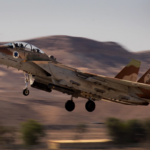
The Army’s new acquisition executive said he believes the service can secure additional funding for its modernization portfolio if it shows Congress early success transitioning new weapon systems from prototyping into production. Doug Bush, who was sworn in as assistant secretary of the Army for acquisition, logistics and technology (ASA (ALT)) on Feb. 11, told reporters Thursday he’s “very comfortable” with the current status of modernization programs, as several efforts are headed toward fielding over the next year. “I am…

 By
By 








